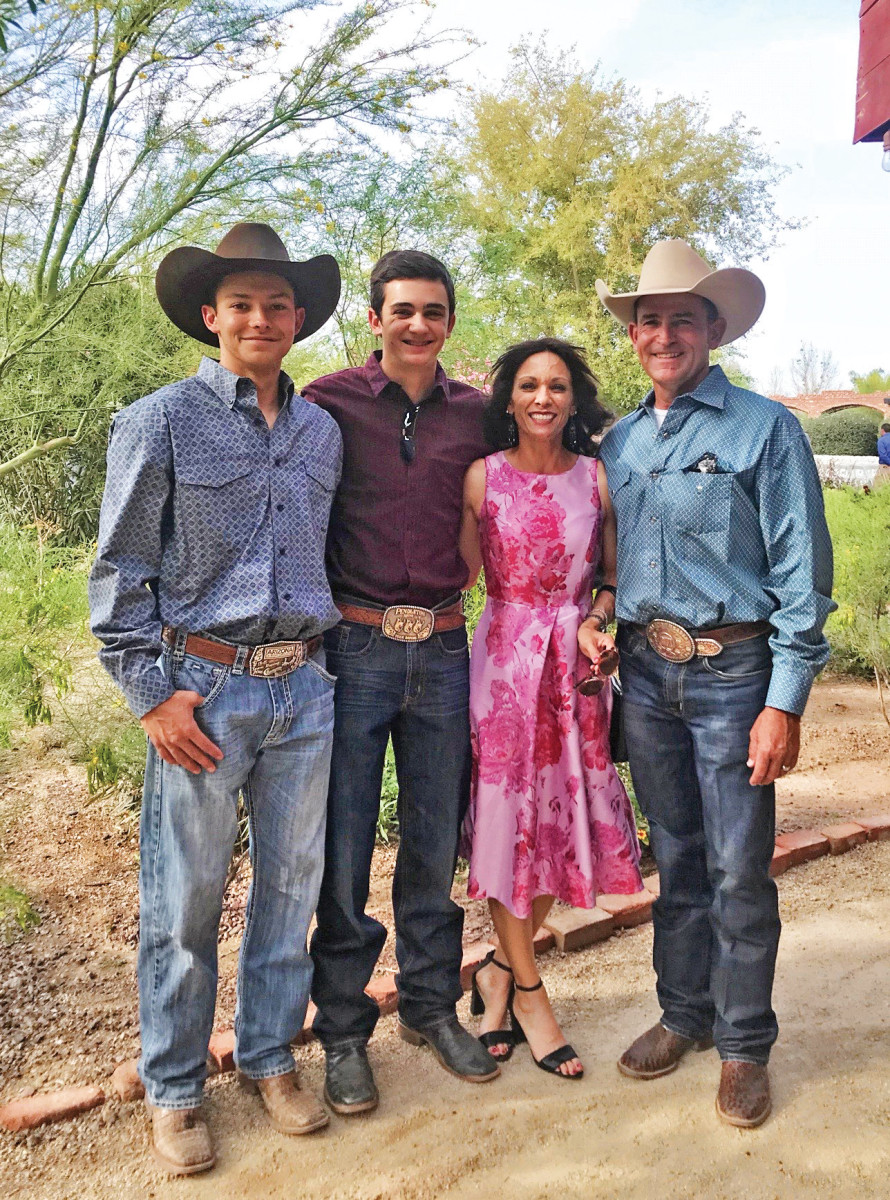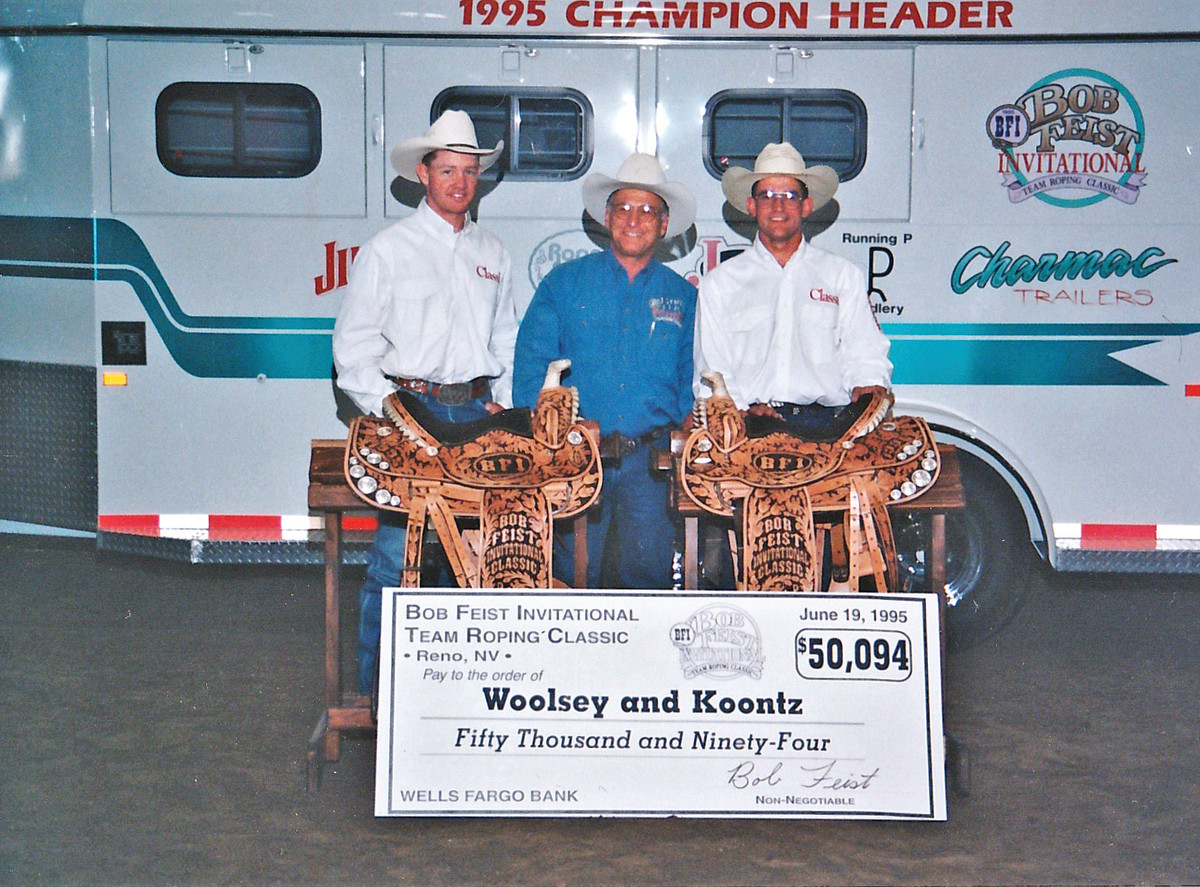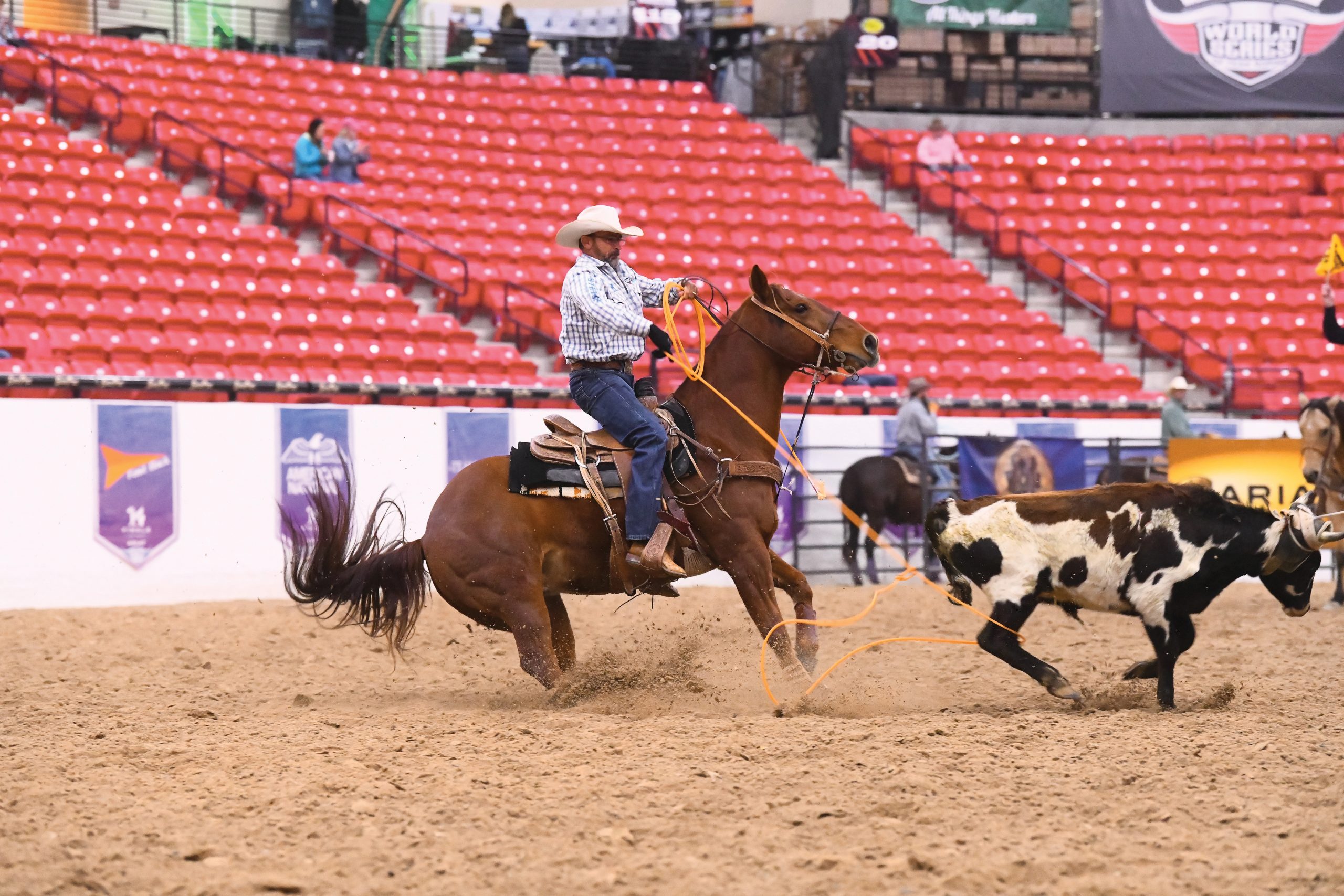Q: Name your NFR years and partners.
A: I roped with Kory Koontz in 1992 and ’93, Bobby Harris in 1995 and Bret Gould in 1997.
Q: Name your NFR high and low.
A: I have a couple highs, starting with the first steer I ever ran there. That feeling of, “I finally made it” is hard to beat. From the time I was a little boy I always wanted to rope there, but you don’t know if it’s just a dream or it’s for real. So that was cool. My next highlight was pretty much all of the ’97 Finals. Bret and I placed in seven out of 10 day moneys and won three of them. When you’re on a roll at the NFR, it’s pretty simple. It’s not stressful, it’s easy.
My least favorite moment would have been all of ’93, because we never could put a run together. That’s the back side of the NFR. If you don’t get tapped off and you can’t put your run together early, it’s really hard to put it together late. That’s just standard NFR. If you can find your run and get that run going in the first three or four nights, it goes pretty good and a hiccup’s just a hiccup. If you go five nights and can’t find it, it’s pretty hard to salvage a good week. The NFR is the easiest place to win and the hardest place to lose.

Woolsey Family Photos
Q: What do you consider the highlight of your roping career?
A: Winning the 1995 BFI with Kory was a big deal. That stays with you forever. When I was a 10-year-old boy, there were two things every cowboy kid with big dreams wanted to win—the world championship and the BFI. Golfers are defined by the four majors. If you win one of them, they never forget your name. In the seventies and eighties, when I was growing up, those were the two majors of team roping. So when I won the BFI, I achieved one of my goals. That BFI win and the George Strait win (Rube won that with Kory in 1993) have been valuable to me long after I spent the money. These days, I have the most fun when I get to rope with my kids.
Q: What do you miss most and least about roping on the full-time rodeo trail?
A: I miss the guys. The camaraderie. The brotherhood. We used to all hang out together. I had a lot of friends, and guys from all the events. We helped each other out. What I don’t miss is the driving, and just sitting behind the wheel thinking about what you’d be doing if you weren’t stuck in a truck. There comes a certain mile where you don’t feel productive anymore.
Q: You walked away from rodeoing full time in your prime. Why?
A: Bret and I had a great 1997 NFR. We were the first or second high-money-winning team, and I finished fourth in the world. I came home and paid all my bills, and I was still broke. I started rodeoing again in 1998, but I was tired of driving and being broke. Roping is the greatest hobby in the world and the worst way to make a living. I was driving at 2 in the morning when I decided I was done. I had no clue what I was going to do, but that was it. Once that decision was made, I was looking for a job. A guy asked if I’d give him one lesson a week for a month. Now it’s 20 years later, I guess I’m still looking for a job and I’m having a blast. We bought this place 18 years ago, and I think I’ve had the best life in the sport of team roping anybody could have. I was just turning 29 when I quit, and when I look back on it, it was perfect. I went to a handful of NFRs and got to win a couple of majors. I got to experience roping for a living at the coolest level. From 1998 to 2010, I circuit rodeoed. I went to about 10 rodeos a year, the BFI and Salinas. In 2011, I quit buying my card and quit roping competitively to focus on teaching.

Courtesy Roper’s Sports News
Q: Talk in a little more detail about what you’ve done the last couple of decades.
A: I teach roping for a living, and we have a winter roping camp. We have 16 RV hookups, and people come and stay four or five months a year. We live in the team roping capital. You can rope for money seven days a week in the wintertime where we live. If they choose our place, instruction is part of the deal. I give lessons five days a week to the group. Then after they leave—from April to October—I fly around and do schools. I teach about 22-25 schools a summer, and I love it. You can tell when you explain things right, because it shows up in people’s run.
Q: Talk about some of the best friends and greatest influences in your life and career being rodeo royalty.
A: When I was a no-name kid from Dewey, Arizona, turning 18 and about to start college at CAC (Central Arizona College), Clay (Cooper) told me I could live in a trailer on his place in Chandler. It was the late ’80s, Jake and Clay were the kings, and I got to rope with them there for three years. Then when I was rodeoing in Texas, I was at the Houston Astrodome, back when we ran one steer a week. I was staying in my camper in the parking lot, and Tee Woolman rode by. He asked where I was going to stay that next week. I said right there, he said, “Come on,” and I followed him home to Llano from that parking lot. I never left for six years. At first, I slept on the couch. Then I had my own room. I got to live a Hollywood movie. The way it’s all gone for me has been a fairytale.











